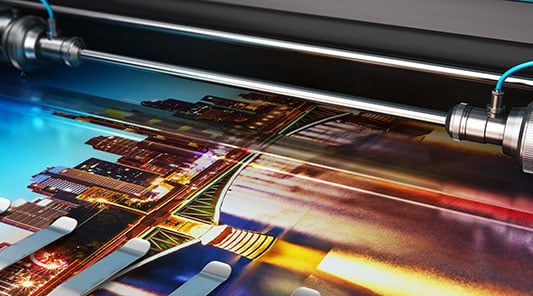AM Lithography


The Quantum library is incredibly fast. Backups all get finished within our allowed windows—even our weekly full backups only take a few hours—and recovery of files is also fast, almost instantaneous.


Leading Print and Packaging Supplier Relies on Quantum Libraries for Protection and Archiving
Printing powerhouse AM Lithography has evolved its workflow for more than 30 years to provide world-class service to national brands. For decades, the company has relied on Quantum backup libraries to provide secure, reliable, high performance data protection and archiving.
AM Lithography became a major printing enterprise during a transformational era. “The printing industry today looks nothing like it did in 1983 when we were founded,” explains Fred Gamber, AM Lithography’s Director of Pre-press Services, “but AM Lithography has maintained the same mission through all the changes: give clients a one-stop shop to get all their printing needs fulfilled with the highest quality, fair prices, and great service.”
Using New Technology to Evolve the Business
The company’s success has been linked to how well it has leveraged digital technology and recognized that IT services are a critical part of contemporary printing. Gamber adds, “Today, what we get from customers are digital files with their original content, which we manage, process, and use to create finished material. Protecting that content, both for the short and the long term, is extremely important to us.”
3-2-1 Backup Strategy Protects Against Data Loss
AM Lithography uses a 3-2-1 backup strategy, writing daily incremental backups and weekly fulls to the Quantum library. “That gives us two copies,” Gamber explains, “the primary copy and another on tape. To provide the third copy, we periodically move tapes to an off-site location for longer term protection. That gives us both short term backup files for quick restores and long-term protection as part of disaster preparedness. Because the backups are on tape, they give us an important defense against cyber-attacks like ransomware that can compromise files stored only on disk.”
Long-term Archive Stored in the Same Library
“We also use our Quantum library to provide a long-term archive for our work, and for that we use Archiware P5, software specifically designed to let us easily move files to tape for long term archive,” Gamber explains. “The interface is simple, anyone can retrieve files from tape quickly and easily, and it integrates easily with the Scalar® library and its LTO drives and media. We can leave tapes in the library for quick access, and we can create duplicates to move off site for DR protection, as well.”
AM Lithography’s library is a Scalar i3. It can start as small as a single, 3U rack-mountable system, but it scales in 25-cartridge increments, eventually reaching up to 12 Petabytes. The library uses capacity-on-demand scaling for non-disruptive, economical growth. Best-in-class storage density and the industry’s most energy efficient power supplies minimize data center space and cooling requirements.
Fast Backup and Recovery
“The Quantum library is incredibly fast,” Gamber explains. “Backups all get finished within our allowed windows—even our weekly full backups only take a few hours—and recovery of files is also fast, almost instantaneous. Reliability has also been exemplary. Once the system was up and running, it just works—we go months at a time without having to look at it or think about it.”
Recovery speed was important recently when one of the servers suffered a cyberattack. “I admit to being nervous when I first heard about the attack, but all of our preparation and planning paid off big time. We had all the data safely on tape and we rebuilt the system in only a few hours. Nothing was lost and we were back up and working the same day.”
Taking a Partner Approach
The company thinks of its clients as partners and it uses the same approach in when it picks vendors. “We put a premium on finding people we can work with successfully for years— Quantum fits that pattern. We have used Quantum libraries over and over again, upgrading to the next generation of drives, media and platforms as our needs change. When an issue does come up, and they are rare, the company takes whatever action is needed to resolve it quickly.”


